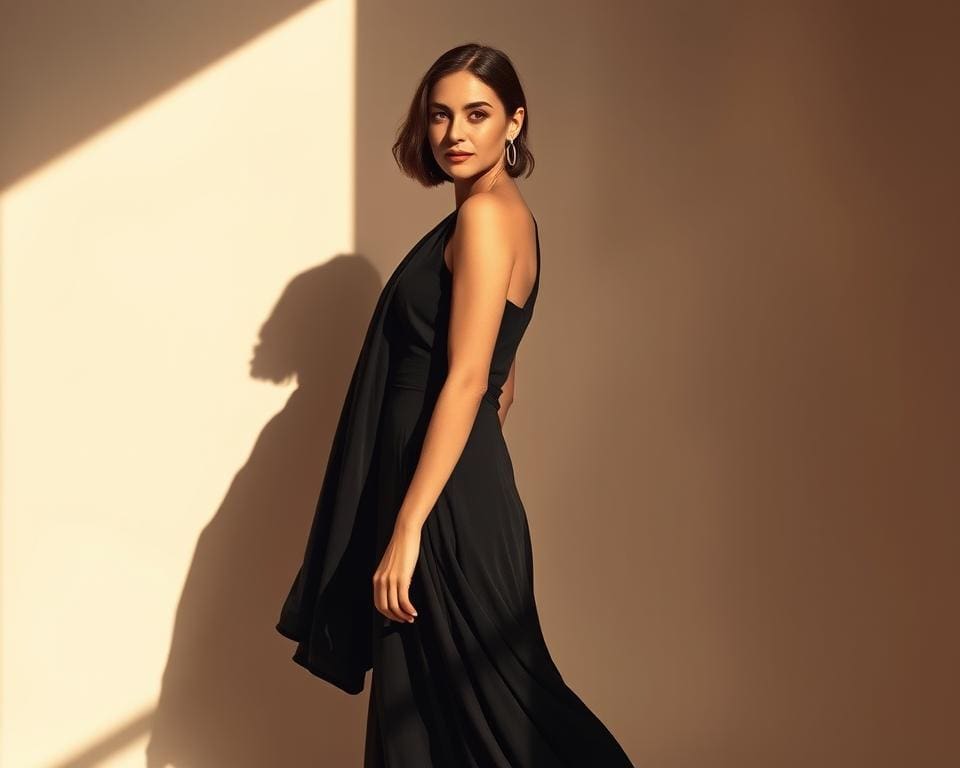In the vibrant world of fashion, certain looks possess a remarkable ability to transcend time and trends, cementing their status as iconic fashion statements. These styles resonate deeply with audiences, often reflecting a blend of cultural significance and uniqueness. The essence of timeless style lies in its capacity to inspire individual expression while leaving a lasting imprint on the global fashion landscape. As we embark on this journey to explore the elements that contribute to creating such iconic looks, we will uncover the powerful influence that fashion has on personal identity and expression.
The Essence of Timeless Style
Timeless style transcends fleeting trends, often symbolising significant moments in fashion history. It captures not just aesthetic appeal, but also the cultural impact that shapes our understanding of what is iconic. By examining various elements from the past, one can uncover the essence of what makes certain looks endure through generations.
Understanding Iconic Fashion Moments
Throughout fashion history, several pivotal moments have defined what we now consider iconic. One example is the introduction of the mini skirt by Mary Quant in the 1960s. This revolutionary piece altered perceptions of women’s fashion and signified a shift towards freedom of expression. Such iconic moments resonate deeply, shaping societal norms and attitudes towards style.
Influence of Cultural Context on Iconic Looks
The cultural context surrounding fashion often dictates the trends that emerge and endure. Historical events, societal movements, and artistic influences play a significant role in shaping iconic looks. For instance, the punk movement challenged traditional aesthetics, introducing bold styles that carried a message of rebellion. Designers like Coco Chanel also left a lasting mark, utilising fashion as a tool of empowerment for women. This interplay between culture and style illustrates how the collective narrative influences timeless fashion pieces.

Elements of Iconic Fashion Design
Iconic fashion design transcends mere clothing; it embodies feelings and communicates individuality through its foundational elements. From luxurious materials to striking colour theory, every piece captures a moment and a message. The utilisation of specific materials and textures plays a vital role in defining unique styles that resonate deeply with audiences.
Materials and Textures that Define Style
The choice of materials in fashion design significantly influences the emotional resonance of a garment. High-quality fabrics such as silk, denim, and leather contribute to the overall appeal. Designers like Burberry, renowned for its signature tartan, employ textures that evoke tradition and sophistication. Textural elements not only enhance the visual appeal but also create tactile experiences, connecting the wearer to the garment in a personal way.
The Role of Colour in Making a Look Stand Out
Colour theory is another essential aspect of iconic fashion design. The artful combination of colours can evoke powerful emotions and make a bold statement. Fashion icons like Gianni Versace exemplify this through their use of vibrant hues and intricate patterns, showcasing the impact of colour in defining a brand’s identity. By understanding how different colours interact and influence perception, designers can create looks that not only capture attention but also express deeper narratives.
What makes a look truly iconic?
The realm of fashion is undeniably influenced by renowned figures who have shaped and defined what constitutes a look that resonates through time. Fashion icons such as Audrey Hepburn and David Bowie set benchmarks that inspire generations, with their unique celebrity style acting as a catalyst for trendsetting. Their ability to cultivate iconic looks transformed their personal memorabilia into powerful symbols within the fashion industry.
The Impact of Fashion Icons and Celebrity Influence
Fashion icons possess an extraordinary gift for blending distinctive aesthetics with cultural relevance. Their influence extends beyond mere clothing choices; it sparks a revolution in the public’s perception of style. For example, Audrey Hepburn’s timeless elegance and David Bowie’s audacious flair exemplify how individual personalities can redefine beauty norms and fashion standards.
The dynamic partnership between celebrities and designers often results in moments where personal style intertwines with haute couture. Collaborations give rise to legendary pieces that encapsulate the essence of iconic looks. In today’s digital age, social media amplifies this relationship, allowing stars to not only showcase their fashion choices but also shape trends almost instantaneously.
Observing these influential figures reveals that celebrity style often revolves around authenticity and the courage to express individuality. As fans emulate these trends, the circle of influence widens, driving shifts in fashion culture. The synergy of fashion icons and designers continues to inspire aspiring individuals seeking to carve out their unique narratives within the world of style.
The Power of Personal Expression
Personal expression plays a pivotal role in defining one’s unique style. Individuality is not merely a trend; it is the essence of what makes fashion so captivating. Iconic looks often stem from a blend of personal experiences, cultural influences, and individual tastes. Embracing your authenticity can lead to a style that truly resonates with who you are.
How Individuality Shapes Iconic Looks
Every individual carries a distinct story that influences their fashion choices. This personal style becomes a canvas for creativity, allowing one to explore various elements to create something remarkable. Iconic looks often emerge when individuals dare to break away from conventional norms, integrating pieces that speak to their unique identity. This exploration of individuality not only defines how one dresses but also inspires others to find their own signature style.
Styling Tips for Creating Your Own Iconic Look
Developing an iconic look that reflects your personal style involves experimentation and confidence. Here are some styling tips to consider:
- Start with the basics. Build a wardrobe with versatile pieces that you can mix and match.
- Incorporate statement items. A bold accessory or unique clothing piece can elevate your outfit.
- Play with textures and colours. Combine various materials to create visual interest.
- Draw inspiration from fashion icons, but add your personal twist to make it your own.
- Don’t shy away from layering. Different silhouettes can enhance your individuality.
As you explore these tips, remember that the beauty of fashion lies in its power to reflect your authentic self. Embrace your individuality, and let it guide you to create looks that are unmistakably yours.
Historic Trends that Have Shaped Iconic Fashion
The evolution of fashion reflects a rich tapestry of cultural shifts and artistic expressions. Each decade showcases distinct styles that not only define periods but also influence subsequent trends. An exploration of these historical trends reveals the forces that have shaped iconic looks, incorporating innovative designers and cultural movements that resonated across generations.
Decades of Influence: From the Roaring Twenties to Modern Day
The Roaring Twenties ushered in an era characterised by opulence and a sense of liberation, setting the stage for future fashion movements. Flapper dresses and cloche hats became symbols of newfound freedoms, embodying the spirit of the age. As the decades progressed, the 1950s introduced a contrast with its rock ‘n’ roll culture, bringing fitted bodices and voluminous skirts to the forefront. Meanwhile, the 1980s embraced power dressing, where bold shoulder pads and tailored suits reflected the confidence of women stepping into professional roles.
The late 1990s witnessed a shift towards minimalism, marking a departure from excess. This period emphasised clean lines and understated elegance, as seen in the collections of brands like Calvin Klein. Each of these decades of influence has played a crucial role in the ongoing narrative of fashion history, contributing to styles that resonate even today.
Iconic Fashion Movements that Reshaped Style
Pioneers like Vivienne Westwood pushed boundaries, merging punk ideologies with high fashion and creating pieces that spoke to societal issues. The impact of these movements remains significant today, as contemporary designers draw inspiration from past styles while reinterpreting them for modern audiences. Through this exploration of fashion movements, one can see how history continually shapes the future of style.
Current Trends and the Path to Iconicity
The evolving landscape of fashion showcases a vibrant tapestry of current fashion trends that speak to modern sensibilities while echoing the past. Fashion today is increasingly being defined by a blend of sustainability and contemporary design, as brands like Stella McCartney and Reformation champion eco-friendly practices. These designers not only highlight the need for responsible consumption but also reimagine classic styles, thus paving the way for a new generation of iconic looks that resonate with a conscious audience.
In this digital age, technology and social media have become vital players in trend forecasting, enabling rapid dissemination of new styles and allowing individuals to curate their aesthetics from a global pool of influences. Platforms like Instagram and TikTok serve as melting pots of creativity, where unique expressions of iconic style can emerge from diverse cultural backgrounds. This globalisation fosters a rich exchange of ideas, encouraging personal interpretations of contemporary fashion that can transform everyday outfits into standout statements.








